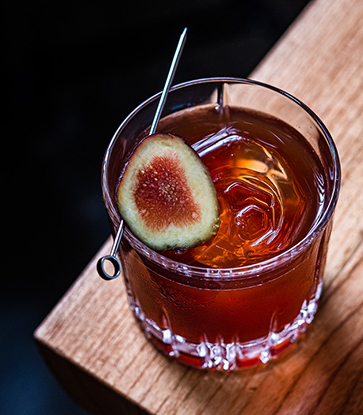It’s said that Irish coffee dates back to the 1940s, when Joe Sheridan, head chef at the restaurant and coffee shop in the Foynes Airbase Flying boat terminal building in Ireland’s County Limerick, wanted to make a drink that would cater to folks visiting from the United States. Enter San Francisco Chronicle travel writer Stanton Delaplane—who grew great affection for the drink while passing through the airport—who challenged San Francisco Buena Vista cafe owner Jack Koeppler to recreate it when he returned; the North Beach favorite has been serving the cocktail ever since.
Like most favorite cocktails of Yore, the humble Irish cocktail is made with only a few ingredients: a good quality coffee, sugar, cream and a great Irish whiskey.

“To be frank, Irish whiskey is really hard to sub out,” says Pamela Wiznitzer, creative director of cocktail haven Seamstress in New York, and president of the U.S. Bartenders’ Guild. “Its phenomenal fruit notes really complement the coffee.” Using a bourbon or rye could make the drink be too sweet or too oaky, respectively.
Just as important are the coffee and sugar. At Buena Vista—Wiznitzer’s favorite when it comes to Irish coffee—two sugar cubes are used. “They dissolve it in hot water and build the coffee out of there. It’s awesome,” she says.
Wiznitzer, whose resumé includes being on the opening team of New York City powerhouse The Dead Rabbit Grocery & Grog remembers the first time she made an Irish coffee. “It was with Dale DeGroff in 2012,” she says. “We used good, rich demerara sugar, which amplifies the whiskey in the glass—it’s a lovely, unrefined sugar that’s darker and pairs much more beautifully.”
Though she typically uses Slane, a small-batch spirit new to the scene out of County Meath, Wiznitzer says larger brands like Teeling and Tullamore Dew—also used at Buena Vista—make excellent replacements. “Tullamore Dew has two new expressions out, an XO finished in rum barrels offering banana and tropical notes, and their cider cask, which adds a fun dimension,” she says. “And if you want to go super fancy, Red Breast is always great.”
Home bartenders shouldn’t be wary of any clotted cream mishaps when preparing the cream float—Wiznitzer swears anyone can do it. “The trick is to dry shake it to the point where it still has the ability to move around—that’s the sweet spot. Usually 10 to 20 seconds will get you there. You know you’ve done it well when it layers beautifully on top when you pour it out of the vessel.” For another dimension of flavor, Wiznitzer likes to garnish with orange zest or freshly grated cinnamon or nutmeg for added flair. “You can get a little creative.”
Wiznitzer also suggests making sugar syrups as opposed to sugar cubes: “Sometimes it’s harder to dissolve,” she says. “The less volume the sugar syrup, the more room for the other ingredients. Who doesn’t want more whiskey or to sip through more cream? It’s a nice pick-me-up.”

Irish Coffee
Recipe courtesy of Pam Wiznitzer, Seamstress, NYCIngredients
1.75 ounces Irish whiskey, preferably Slane
0.5 ounces Demerara simple syrup (2:1, sugar to water)
2.5 ounces hot strong brewed coffee
1 ounce cream float (recipe below)
Cinnamon stick, for serving
Method
In a heatproof Georgian glass, add the Irish whiskey, Demerara simple syrup and coffee, leaving room at the top for the cream; stir gently. Float a thin layer of cream on top. Garnish with a healthy grating of fresh cinnamon.
Cream Float
Ingredients
6 ounces heavy cream
3 teaspoons powdered sugar
1 grating fresh cinnamon
Method
Combine ingredients in a Mason jar or protein shaker. Cover and shake for 20 to 30 seconds, being careful not to over shake. The consistency should become denser, but still pourable.
Portrait of Pamela Wiznitzer by Gregory J. Buda.



















